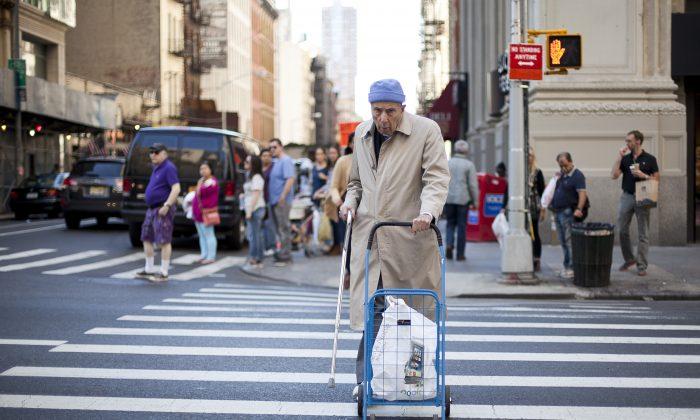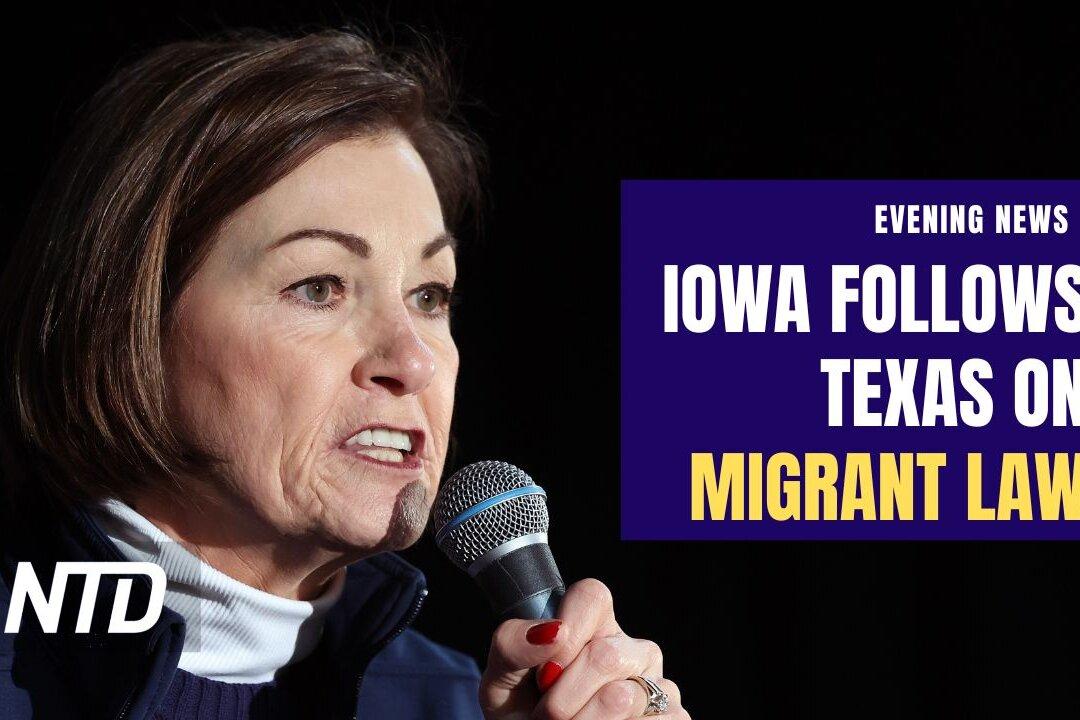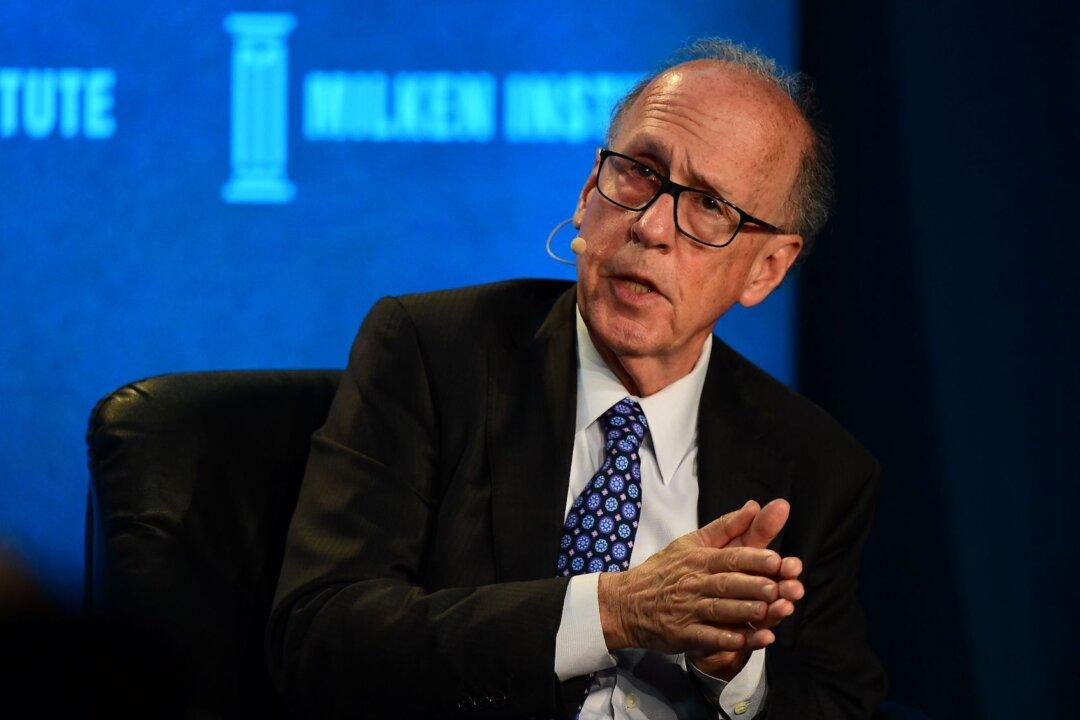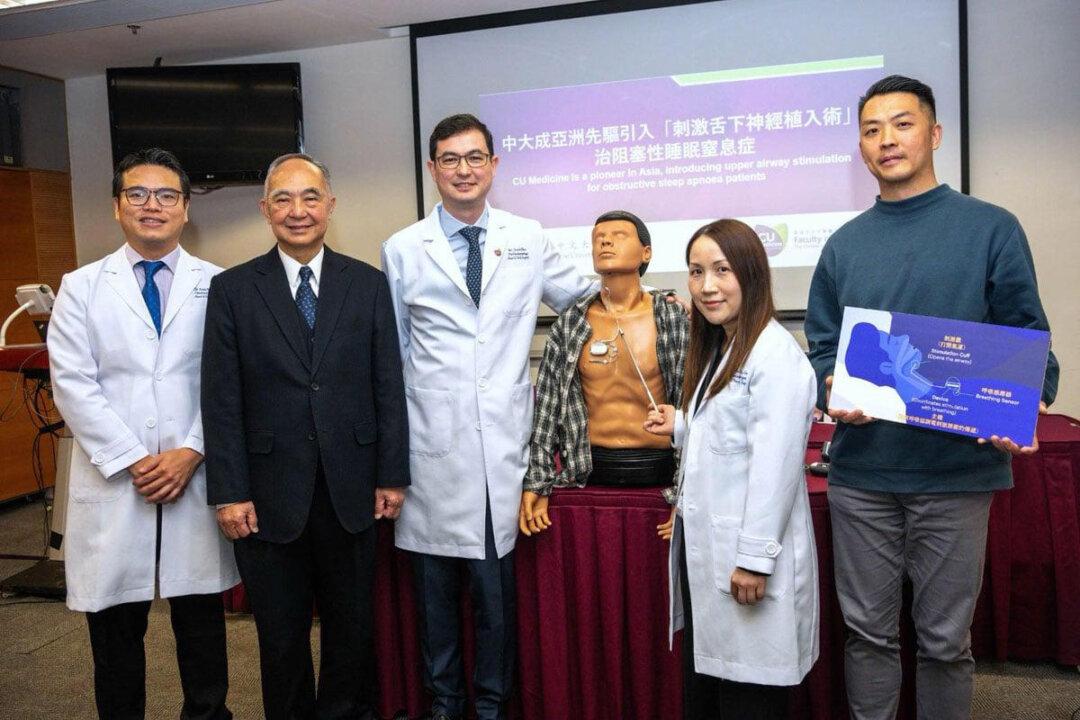NEW YORK—Mayor Bill de Blasio took a bold step on Wednesday towards fulfilling a campaign promise to reduce pedestrian fatalities to zero within 10 years.
Prior to the announcement, the mayor, Police Commissioner Bill Bratton, as well as Department of Transportation Commissioner-elect Polly Trottenberg attended the memorial of 8-year-old Noshat Nahian, who was killed by a tractor-trailer on his way to school last December. Unfortunately, Nahian is one of many children who died in a dangerous intersection in the past year.
“I want to emphasize that we are making this statement just two weeks into this administration because we think there is an epidemic here,” de Blasio said at a press conference near Northern Boulevard, where Nahian was struck.
“This is going to be a central focus of our administration because the human cost is simply unacceptable.”
The issue of traffic fatalities is glaring for the new administration.
It has been two weeks into 2014 and already 11 New Yorkers have died in traffic-related accidents—7 of them were pedestrians. Last year the murder rate was at a record low of 333 homicides, but there were an alarming 286 traffic fatalities. According to the Department of Health and Mental Hygiene, being struck by a car is the leading cause of injury-related deaths for children younger than 14, and the second-highest cause of injury-related deaths for senior citizens.
“A life lost, is a life lost, whether by murder or by traffic accident,” said Bratton.
The interagency working group that will carry out Vision Zero consists of the New York Police Department, Department of Transportation, Department of Health and Mental Hygiene, and the Taxi & Limousine Commission.
Together, these departments will lay out a blueprint for long-term plans to increase traffic safety. This includes dedicating more NYPD resources to tackling the most dangerous driver behavior, such as speeding and failing to yield to pedestrians. The administration also aims to increase the number of 20 mph zones across the city and get Albany to approve the installation of more traffic cameras. The group is expected to submit a report with concrete plans to the mayor by Feb. 15.
“I said on inauguration day that we were here to make changes and we meant it. And this is an example of where we will act immediately,” said de Blasio.
More Tickets
As an immediate measure, tickets will be issued for speeding in zones monitored by newly installed speed cameras on city streets. The NYPD will also increase the number of personnel assigned to the highway division by 50 percent, to a total of 270 officers.
The NYPD will also dedicate more resources to investigating traffic accidents involving serious injuries and deaths.
“Previously, the department only investigated collisions in which victims were likely to die. That threshold has been expanded to include ‘critically injured’ as a category, increasing the number of cases we are investigating by approximately 20 percent,” said Bratton.
Swedish Roots
Vision Zero is a concept that originated in Sweden. The philosophy behind the concept is any loss of life in traffic is unacceptable. Since then, this concept has been adopted in several other European countries such Norway, the Netherlands, and the United Kingdom.
De Blasio’s version of Vision Zero borrowed the core philosophy, but the implementation is opposite from European countries.
The Swedish concept relies heavily on improving the design of the roads to be safer. The Vision Zero Initiative website states: “We place the main burden for safety on system design because we recognize human weaknesses and low tolerance to mechanical force. … Vision Zero also means putting an emphasis on market options and less on government enforcement and traffic education.”
Under de Blasio, Vision Zero will mainly focus on three things: finding and fining speeding violators, boosting police personnel for traffic accident investigations, and slowing streets down to 20 mph.
Yi Yang is a special correspondent in New York.





Friends Read Free